The Student
Students are encouraged to explore themes of global significance by posing their own questions, looking for the most appropriate means to answer these questions and conducting their own research and experiments leading to observations.
The teacher
The role of the contemporary teacher differs from the role of the traditional teacher. Nowadays, a teacher does not only aim to impart knowledge, but to create an environment that enhances a child’s active participation in group activities, as he/she has a pivotal role to play in the learning process.
The teacher assumes the role of helper, motivator, collaborator and instructor in the discovery and acquisition of knowledge. A teacher has to be a co- investigator, listen to the child, ask questions and focus teaching on guiding the students to the answer. All teachers need to be involved in continuous vocational development by participating in international training seminars and in-house seminars.
The Parent
Parents and educators share the responsibility for educating children through:
- The exchange of information between the school and family
- The involvement of parents in educational activities
- The parents volunteering at school and their participation in the CGS Parents’ Association.
Experiential Learning
Students learn through their senses as they see, hear, smell, taste, move around, recognize objects, understand concepts, explore the environment, experiment with materials, compare and identify various similarities and changes.
Collaborative Learning
Teaching is based on collaborative learning. Students are divided into working groups of 5-6 people. The goal is to reduce competitiveness in the classroom and to increase co-responsibility and mutual support. Teamwork promotes the development of a child’s reasoning and social identity. It also promotes cooperation and encourages learning, as children exchange roles and responsibilities.
Co-teaching
There are several forms of co-teaching. Depending on the size of the group, the age of the students and the subject, teachers organize co-activities for either bilingual teaching or a trans-disciplinary approach to knowledge. This does not necessarily mean that all teaching periods are taught by two teachers.
Homework
Depending on the age of the student and the subject, the assimilation and application of material taught during class allow the pupils to complete part of the homework within school time.
The Use of Resources
Students should not use textbooks as the sole source of knowledge. Besides school textbooks, sources of knowledge should be situations from the students’ daily lives, field trips, the internet, their fellow classmates, their teacher and the world around them. Children evaluate resources, manage information, select, decide and constantly update their knowledge. In addition, the PYP combines the most effective traditional teaching methods with modern teaching methods, as well as the use of modern technology (e.g. a smart board).
Study Periods
In the PYP programme, the way the course is studied plays a decisive role in the curriculum. In Years 1 and 2 of the Primary School, study periods for Sciences and Mathematics as well as Language Courses are included in the regular morning programme (5 hours per week). In Year 3 of the Primary School, the study period (1 hour per week) is devoted to the discovery of an approach to learning the social sciences (History), as it is introduced for the first time in this particular year. For the remaining years, the study period, in the form of assimilation-application, is part of the regular morning programme.


